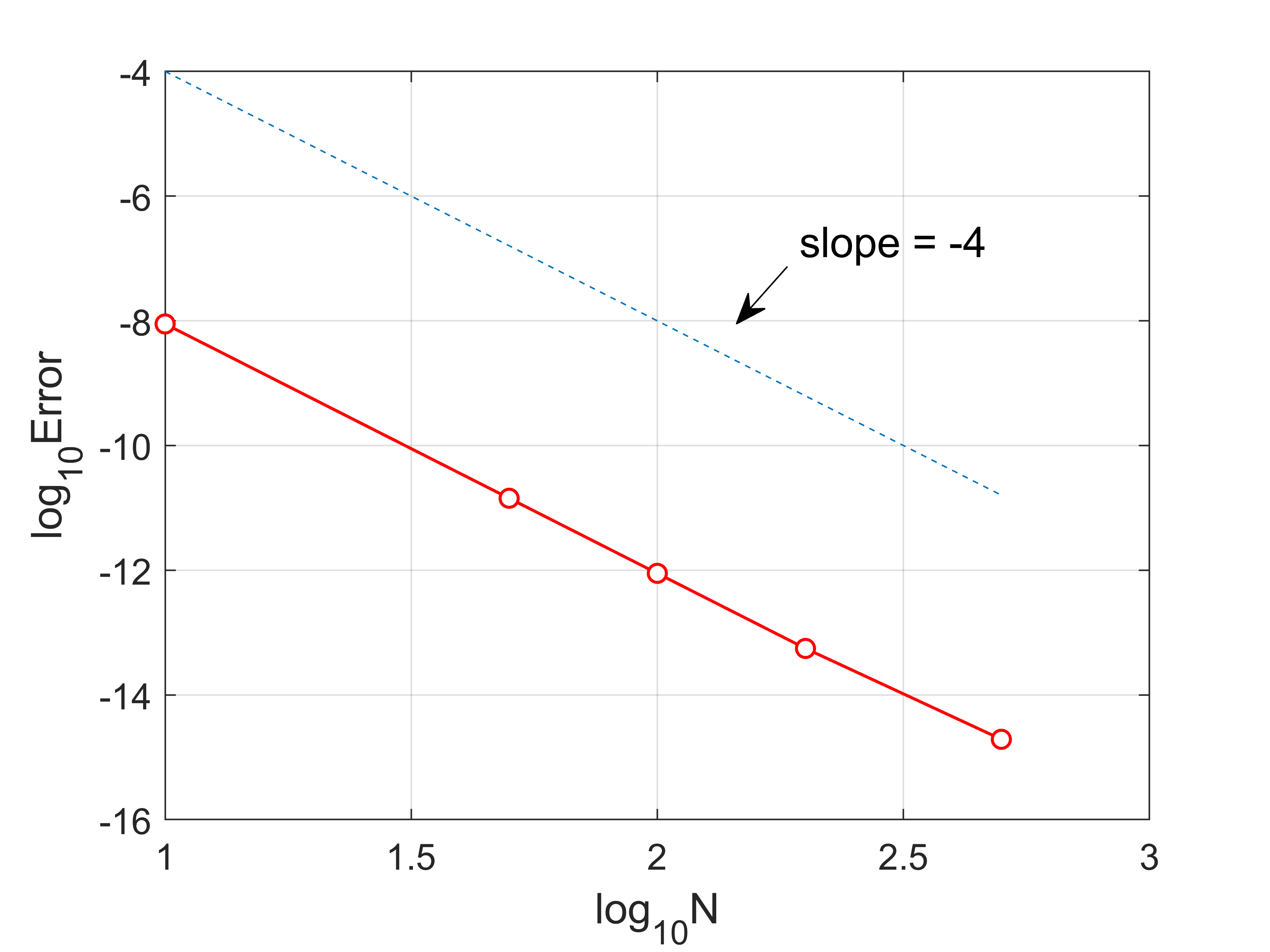1
2
3
4
5
6
7
8
9
10
11
12
13
14
15
16
17
18
19
20
21
22
23
24
25
26
27
28
29
30
31
32
33
34
35
36
37
38
39
40
41
42
43
44
45
46
47
48
49
50
51
52
53
|
clear all; close all;
Nvec=[10 50 100 200 500 1000];
Error=[];
for n=1:length(Nvec)
N=Nvec(n);
h=1/N;
x=[0:h:1];
u(1)=1;
Y=[1;1];
for i=1:N
k=u(i); tol=1;
while tol>1.0e-10
X=Y;
D=[1-0.25*h,-h*(0.25-(sqrt(3))/6);...
-h*( 0.25+(sqrt(3))/6),1-h*0.25];
F=[X(1)-k-h*(0.25*X(1)+(0.25-(sqrt(3))/6)*X(2));...
X(2)-k-h*((0.25+(sqrt(3))/6)*X(1)+0.25*X(2))];
Y=X-D\F;
tol=norm(Y-X);
end
u(i+1)=k+(h/2)*(Y(1)+Y(2));
end
ue=exp(x);
error=max(abs(u-ue));
Error=[Error,error];
end
plot(log10(Nvec),log10(Error),'ro-','MarkerFaceColor','w','LineWidth',1)
hold on,
plot(log10(Nvec), log10(Nvec.^(-4)), '--')
grid on,
set(gca,'fontsize',12)
xlabel('log_{10}N','fontsize',14), ylabel('log_{10}Error','fontsize',14)
ax = [0.62 0.58];
ay = [0.72 0.66];
annotation('textarrow',ax,ay,'String','slope = -4 ','fontsize',14)
for i=1:length(Nvec)-1
order(i)=-log(Error(i)/Error(i+1))/(log(Nvec(i)/Nvec(i+1)));
end
Error
order
|

